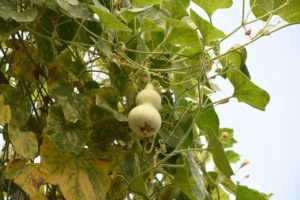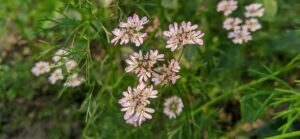

New Trick to Germinate Tinda Seeds at Home
Welcome to the GardenOnTop (Beginners to Advanced Plantation). In the post, we will know all about Tinda’s plantation and know the healthiest benefits…
- About tinda (apple gourd)
- Ultimate tips for germination of seeds at home with a well-drained soil mixture
- How to care for tinda at home
- Best time to harvest tinda
- Top 6 healthiest benefits
- CAQ (Common Asked Questions)
Tinda – The Most Popular Vegetable
Tinda is one of the most widely useful vegetables in South Asia, India and Pakistan. It is also known as apple gourd, Indian baby pumpkin, round melon, and Indian squash. It comes from the Cucurbitaceae family and its scientific name is Praecitrullus fistulosus. The size of the tinda varies from 5 to 10 cm in diameter with a unilateral shape. Seeds are easily available online and in plant nurseries.
- Tinda’s are easily available at vegetable shops or online shops.
- Starting price of tinda’s 30+ rupees per kg.
- Tinda plants grow up to 4+ feet long and spread up to 2 to 4 feet wide.
- Tinda 2 pyaza or Punjabi style tinda are the most popular dishes.
- Tinda plants are similar to tomato plants.
Seedling | Plantation | Repotting
Ultimate Tips for Seedling: Before plantation, you need to be aware of these things like soil media, light exposure, composition, pot type, and transplantation. Let’s know all steps of seedling…
- Make your soil media well with garden soil (30%) + coco peat (20%) + wood chips (20%) + vermicompost (30%). Mix it well and remove unwanted particles. Take a small size of flowerpot(ceramic).
- Fill the soil mixture into a flowerpot and take out the tinda’s seeds.
- Pull small holes and put in on those holes and cover them with the same soil mixture.
- Within 5 to 6 days, germination begins on the seeds, leaves and small branches appear on the plant.
- Spray water properly and keep it in full sunlight until germination.
Seedling Tips: The flowerpot should have good drainage holes and cover those holes with stones (for water drainage). USDA hardiness zone should be 5-10 and soil pH should be raised between 6.0-7.5. Replanting is necessary after germination or when the plants grow to 3 to 4 inches tall. You can use the same soil media in large quantities.
How to Care for Tinda Plants at Home
- Best Composition: Want lots of tindas, now we have a different type of composition. During the summertime, give cow dung manure with vermicompost. While composing, add mulching. Do not forget to give water. Cow dung manure and vermicompost are easily bought from online shops or plant nurseries.
- Light Exposure: Well sunlight gives the best results. Keep plants in full sun at all times. Tinda plants survive easily in full sun. If the temperature gets above 40C then you have to keep it in a shaded place. GardensOnTop recommends that the temperature is 20°C to 35°C. Above this temperature, leaves begin to burn and branches should wither.
- Why Pruning or Thinning: Pruning gives the best result, if pruning was done at right time. Pruning is an important task because due to pruning many germinations begin like branches, leaves, and flowers. Cut unwanted materials like dry flowers, leaves, branches, and unwanted weeds. If baby plants are germinated then repot them. Always use pruning tools.
- Diseases & Solution: Tinda plants are keen to common diseases like an attack of insects on plants or root rot or root fungal diseases due to overwatering. If these types of diseases occur then, spray fungicide powder with water
- Water Timing: Proper watering is necessary. Morning or evening is the best time for irrigation. Give water daily in the summertime and 2 to 3 times in wintertime. Always use the water can.
Good Time for Harvesting Tinda: Most Tinda plants will take 60 to 75 days to bear fruit. When it Is matured it looks like a green shade with a diameter that grows up to 10 cm. If tinda is sown in the month of May, it starts bearing fruits at the beginning of August. So, you can harvest them properly.
Ultimate Healthiest Benefits: Most people don’t eat tinda dishes but don’t know that it is the most powerful and healthiest for us. Let’s read out…
- It improves your skin health like acne, pimples, and pigmentation.
- It prevents hair diseases like dandruff, anagen, hair shaft breakage and traction.
- Good source of weight loss.
- It improves your digestive system.
- Good source of heart health and also control blood control level.
- It improves eye health.
- Lower risk of cancer.
Note: Do not take too much tinda in your diet plant. Consult your doctor.
CAQ: Common Asked Questions is a very important task because it saves the user time and we have lots of queries. Please read carefully…
You need to make good soil media like soil + vermicompost + any compost. Plant all seeds in a drainage pot.
One of the best tricks to care for tinda plants at home is just you need to maintain sunlight or the best composition.
Yes, you can.
July to August is the best time for the seedling.
Best composition gives you the best result.
You can purchase tinda seeds at online shops or nearby plant nurseries. GardenOnTop recommends, buying the grafted plant.
If the size of the tinda rises 4 to 7 cm in diameter with good health then you can harvest them.
You need to be aware of sunlight or best fertilizers (read the how-to-care section).
If you like this post don’t forget to share it with your friends and relatives and also subscribe to my newsletter for instant updates 🙂



















































































